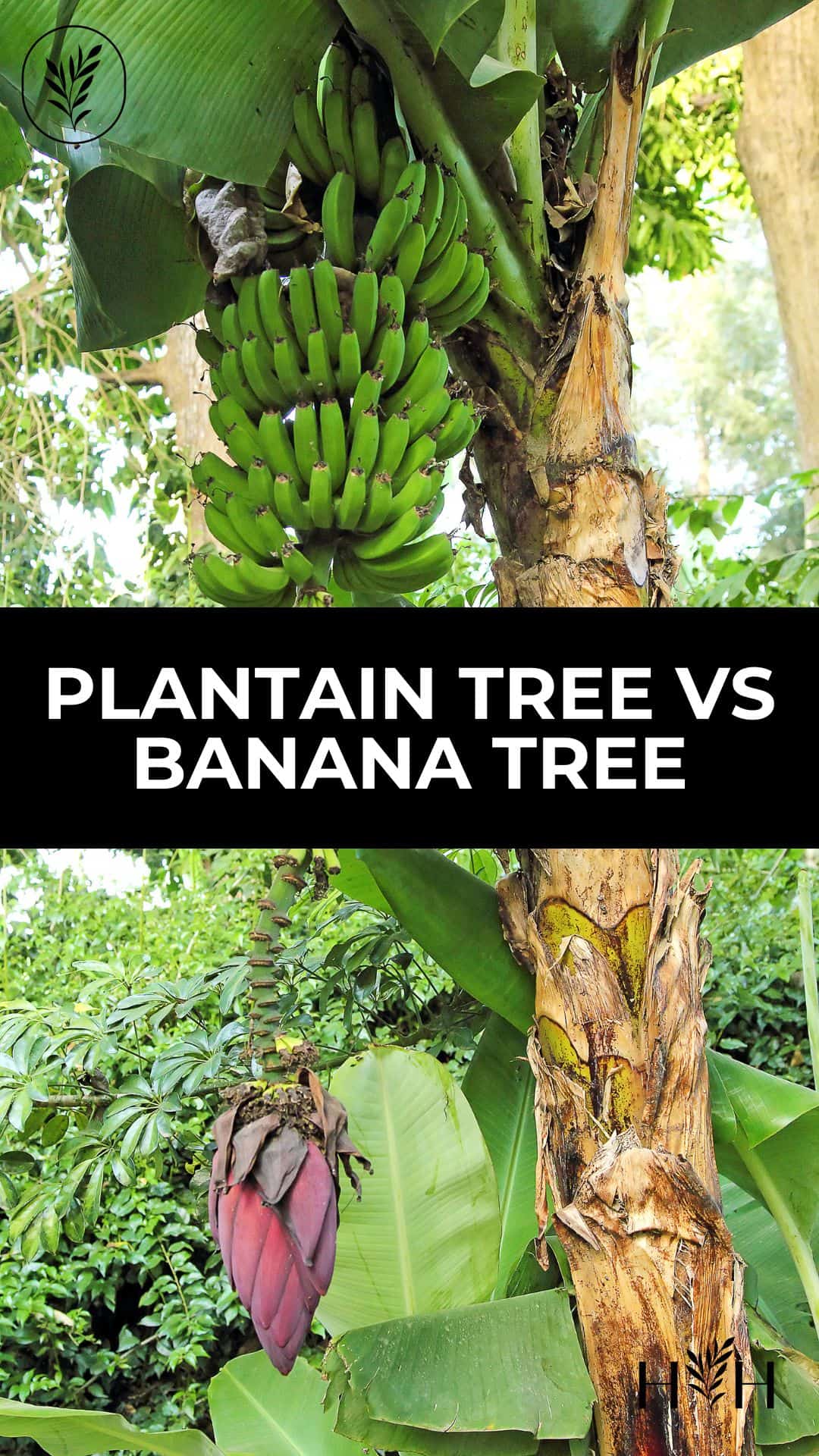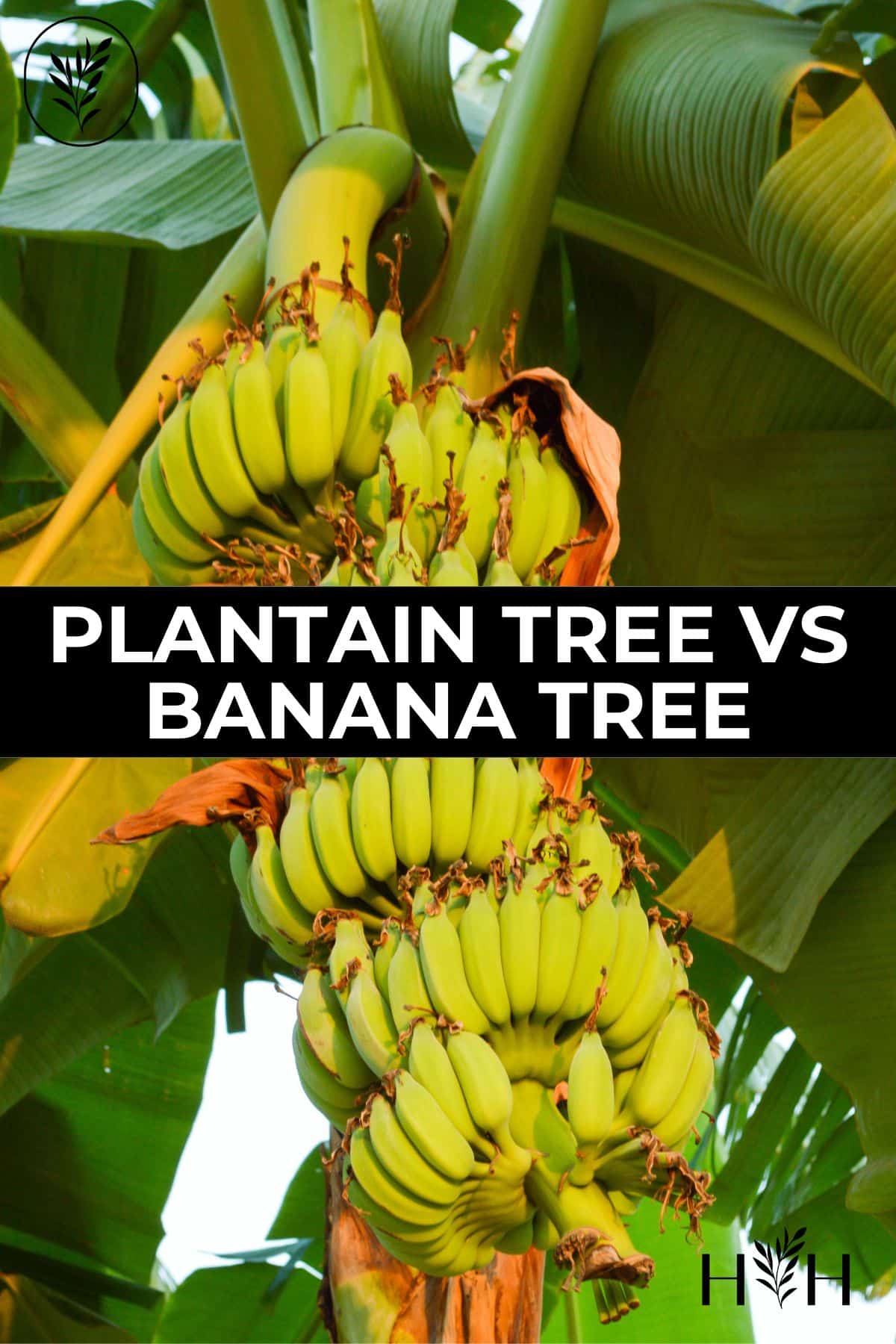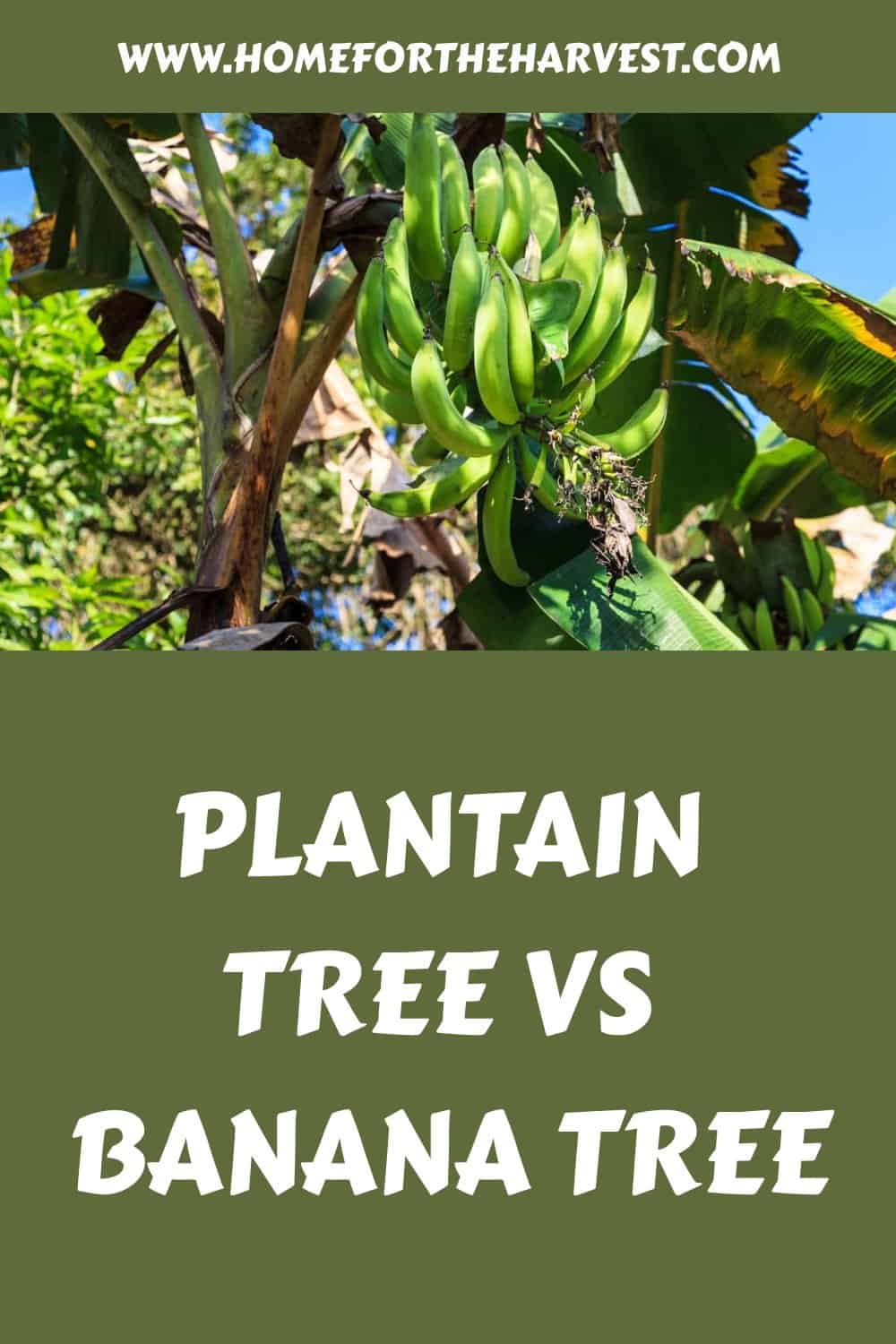Plantain and banana trees are two of the most popular tropical fruits in North America. While they may look similar, several key differences between them make each unique.
Plantain and banana trees are very similar, and in some cases, hybrids of the same species within the genus Musa. In general, plantain trees tend to be more resistant to pests and disease than dessert banana trees. The fruit of banana trees tends to be sweeter than plantain and does not need to be cooked prior to eating. Both plants are actually herbaceous perennials (not trees) and require frost-free climates to grow well (Hawaii, India, Indonesia, Philippines, Brazil, Ecuador).
Read on to learn all about the similarities and differences between plantain and banana trees.
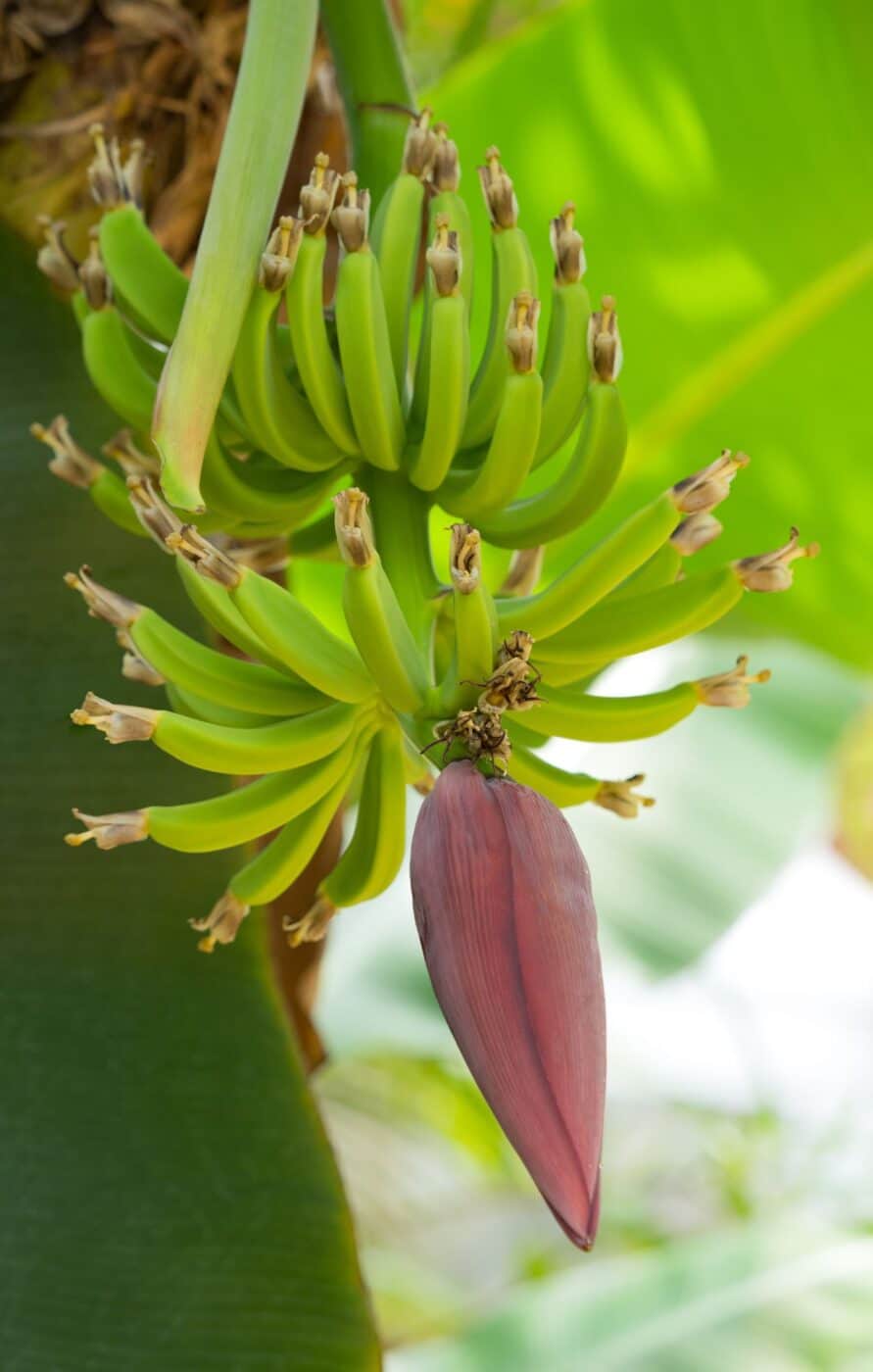
Overview of the plantain tree vs banana tree
Both plantain and banana trees are in the genus Musa (in the banana family Musaceae). While there are over 80 different species in this genus, only two species (and their hybrids) are cultivated:
- Musa acuminata
- Musa balbisiana
- Musa × paradisiaca (hybrid of Musa acuminata × Musa balbisiana).
In general, banana trees are of the species Musa acuminata. Plantains/cooking bananas are of the species of Musa balbisiana. For hybrids of the two, Musa × paradisiaca, most cultivars are considered cooking bananas, but there are also some hybrid dessert bananas that are hybrids of the two popular Musa species.
Bananas are typically bright yellow when ripe and have thin skins that peel easily away from their sweet fleshy interiors. The peel of plantain fruits tends to be a more pale grey-yellow. Bananas tend to be more curved, while plantains are more angular.
Plantain trees have short, stout trunks with large leaves and can reach heights of up to 20 feet. The fruit is usually green or yellow when ripe and has thick skin with a starchy interior. Banana trees, on the other hand, have long slender trunks with small leaves and can grow up to 30 feet tall. The inside of dessert banana fruits is sweeter than plantains and can be eaten raw.
Plantains tend to be hardier than bananas as they require less water and fertilizer for optimal growth. They also produce more fruit per tree than bananas do due to their shorter growing season (about 8 months). On the other hand, banana plants need more frequent watering but will produce larger bunches of fruit (up to 40) if given enough care throughout their 12-month growing period.
Both plantains and bananas are used for culinary purposes in many different cultures around the world. Plantains tend to be used more often as a cooked vegetable, while bananas are mostly eaten raw or added to desserts such as smoothies or ice cream sundaes. Additionally, both types of fruits can be dried or frozen for later use in recipes like breads or cakes.
Overall, plantain and banana trees are both tropical fruit-bearing plants that have many similarities but also some distinct differences. In the next section, we will take a closer look at the physical characteristics of the plantain tree to further explore these distinctions.
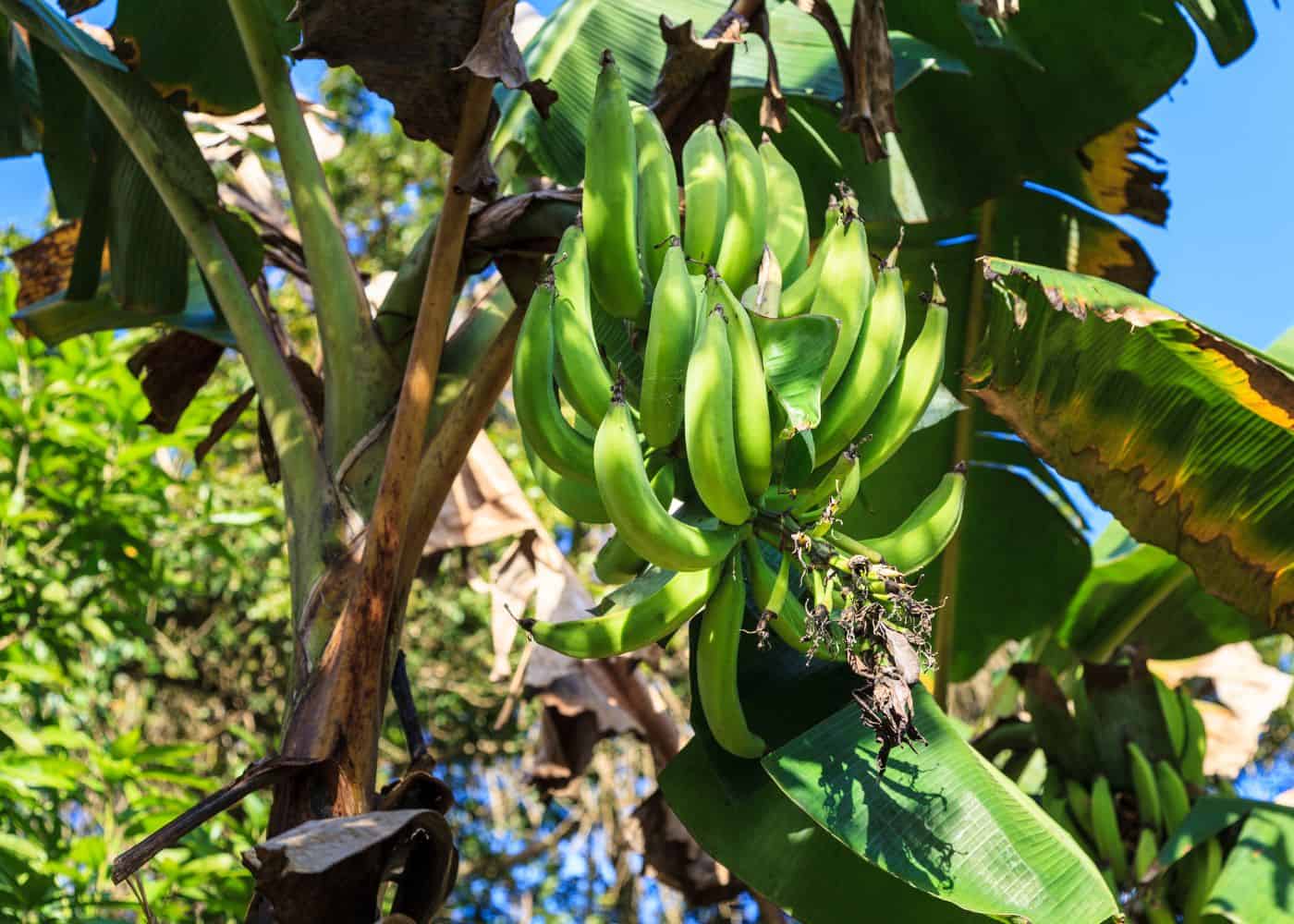
Plantain tree: Physical characteristics
Plantain trees (Musa balbisiana) are small to medium-sized trees, usually reaching a height of 10–20 feet. They have an upright, columnar shape with a single trunk and dense foliage. The leaves are long and narrow, typically 8–12 inches in length and 1–2 inches wide. They are glossy green on top with a paler underside.
The flowers of the plantain tree are small but showy clusters that appear during springtime. These blossoms may be white or yellowish in color depending on the variety of plantain trees you have planted. The flower stalk has a large teardrop-shaped bud made of bracts (like a banana flower). A few bracts lift off the bud each day.
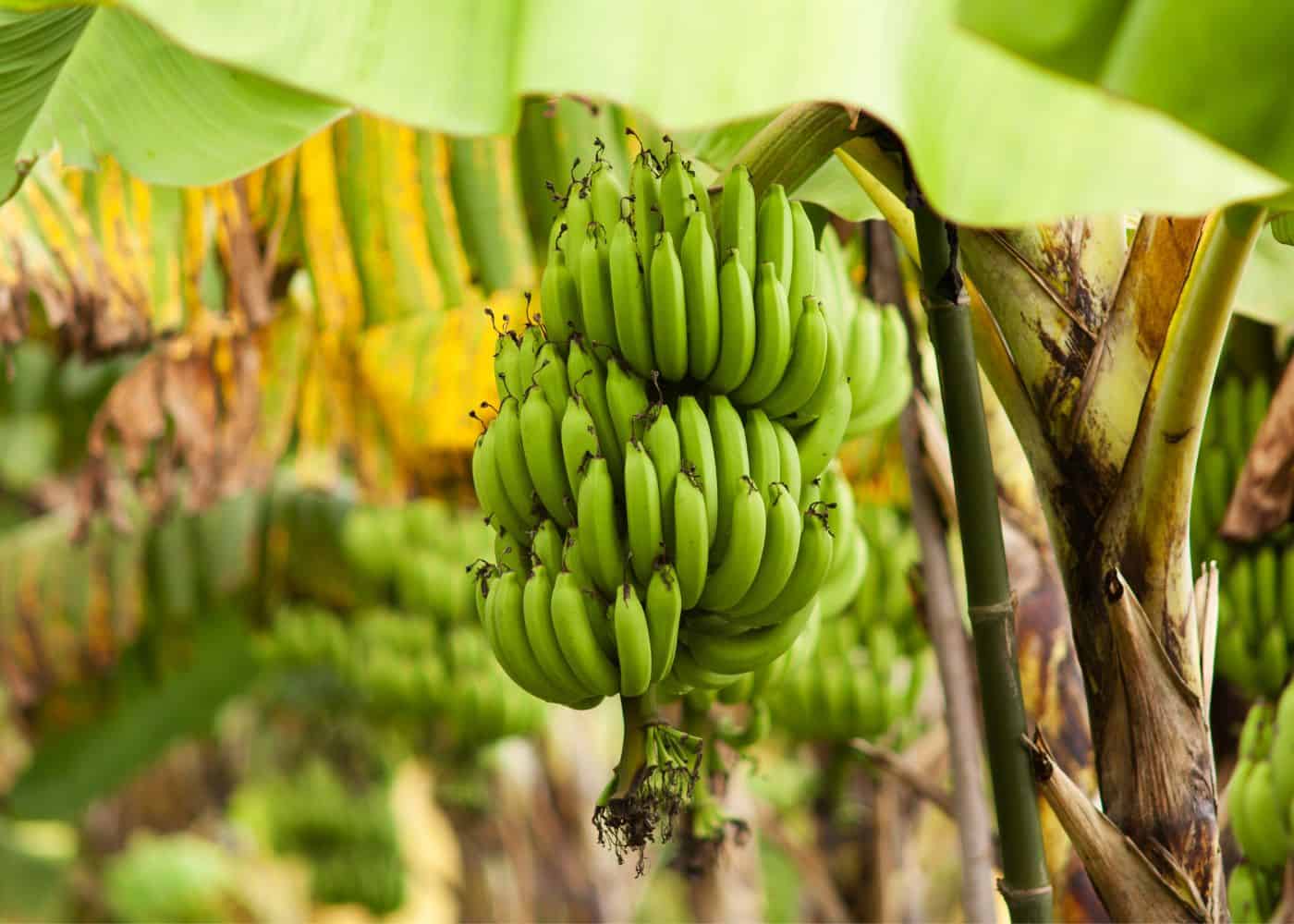
Banana tree: Physical characteristics
Banana trees (Musa acuminata) are tropical plants that can be found in many parts of the world. They are tall, slender plants with long leaves and yellow flowers. The trunk is usually straight and smooth, while the leaves grow in bunches at the top of the tree. Banana trees typically reach heights between 10 to 25 feet when fully grown.
The leaves of banana trees are large and have an oval shape with pointed tips. They range from 6 to 12 inches long and 3 to 5 inches wide. The color of these leaves varies depending on the variety but they’re usually dark green or light green in color.
The flowers of banana trees are bright yellow and bell-shaped with five petals each about 2 inches long. The large flower pod of banana flowers is made of bracts (modified leaves), that curl back as the bud opens. The bracts of banana trees generally leave a more visible scar when they dry than those of plantain trees.
Bananas come in various sizes ranging from 4 to 9 inches long depending on type; some varieties even produce miniature bananas no bigger than your thumb. Their skin also changes colors as they ripen, starting off green and then turning yellowish-brown when ready for consumption.
Plantain tree: Growth habits
Plantain trees are a type of banana tree that produces edible fruit that must be cooked before you eat it. Plantains have a much lower sugar content than regular bananas, making them an ideal choice for savory dishes. Plantain trees require plenty of sunlight and warm temperatures to thrive and produce fruit. They prefer well-drained soil with plenty of organic matter, such as compost or manure.
The plantain tree is fast growing and can reach heights up to 20 feet in just two years when grown in the right conditions. It will continue to grow larger over time but should be pruned regularly to keep it from becoming too large or unruly. The trunk is usually short and thick with many branches extending outward from the top creating a canopy shape.
Fertilizer should be applied twice per year during the spring and summer months for optimal growth and production of fruits which typically appear between 6-12 months after planting depending on the variety chosen by the gardener. Fruits are ready for harvest when they turn yellowish green in color, indicating ripeness – this usually takes around 3-4 months after flowering has occurred if all other conditions have been met correctly (i.e., adequate water, sunlight, etc).
In order to prevent disease or pests from affecting your plantain tree, it is important to practice good garden hygiene such as removing dead leaves or stems that may harbor insects or fungi spores. Additionally, avoid overcrowding plants as this can lead to competition for resources like light, water, and nutrients which can cause stunted growth and poor yields over time – space plants at least 4ft apart so each one has enough room. Finally, make sure you check your local climate before planting any tropical species like plantains because they won’t survive cold winters without protection (such as mulch) being provided beforehand.
The plantain tree has a slower growth rate than the banana tree, but its hardy nature and ability to withstand extreme temperatures make it an ideal choice for many gardens. Now let’s take a look at how the banana tree grows in comparison.
Banana tree: Growth habits
Banana trees are fast-growing, tropical plants that can reach heights of up to 25 feet. They have large leaves and an upright trunk with a crown of leaves at the top. Banana trees thrive in warm climates and need plenty of sunlight and water to produce fruit. The trees can be a bit more finicky to grow than plantains (but not always).
Banana trees require a well-drained soil that is rich in organic matter such as compost or manure. The soil should be kept moist but not soggy for optimal growth. Bananas prefer slightly acidic soils with a pH between 5.5 and 6.5, although they will tolerate higher pH levels if necessary.
Banana trees grow best when fertilized regularly throughout the growing season with a balanced fertilizer. Fertilizer should be applied every 4 weeks during the active growing season from spring through fall, depending on your climate zone.
Bananas typically take 3–4 months from flowering until harvest time once all conditions are met correctly for optimal growth; however, this timeline can vary greatly depending on weather conditions and other factors like temperature fluctuations during different seasons within its environment. Once ripe bananas turn yellowish green before turning yellow then brown indicating it’s ready for harvesting.
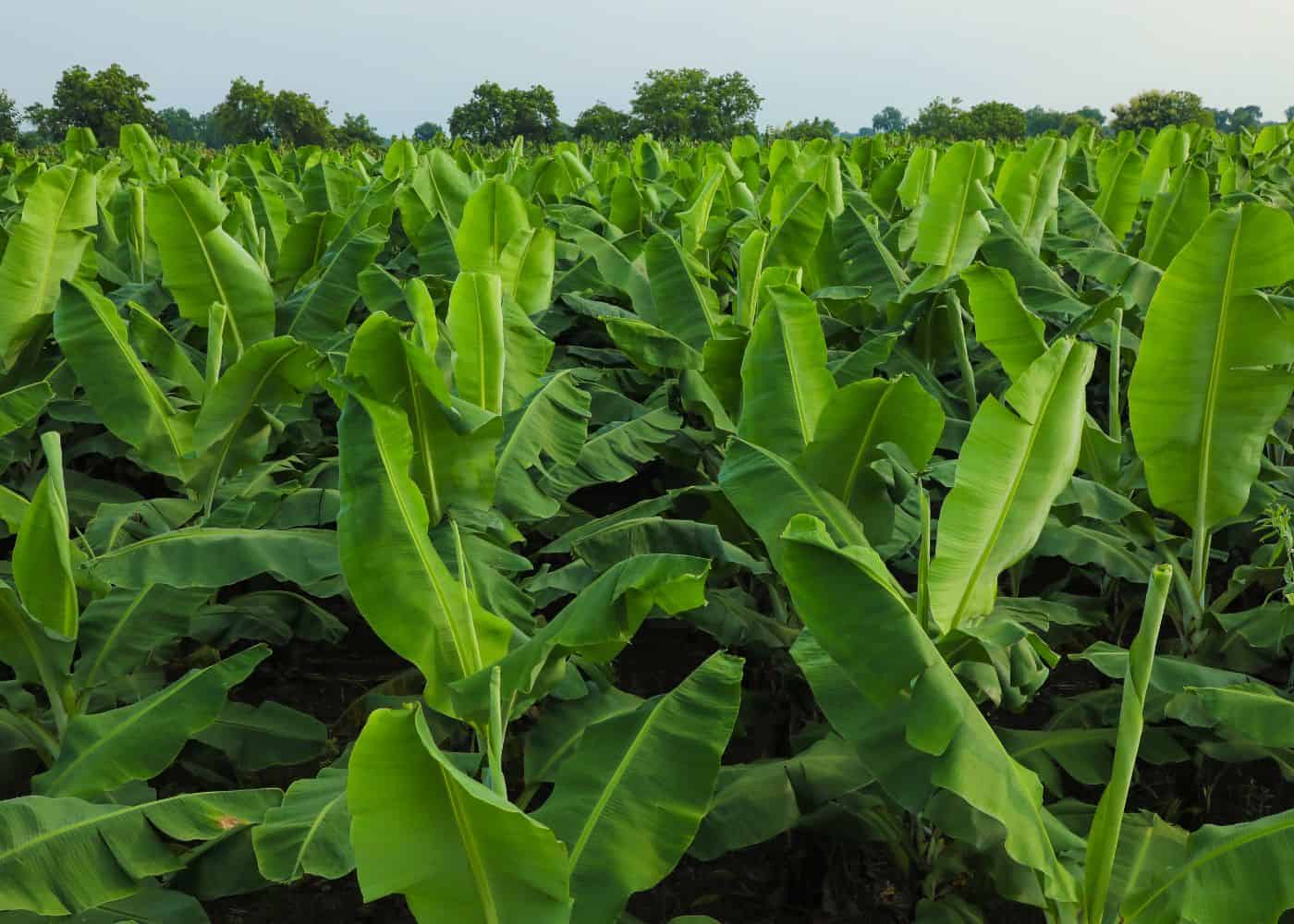
FAQs in relation to plantain tree vs banana tree
How to tell the difference between a banana and a plantain plant?
Bananas and plantains are both members of the Musa genus, but they differ in several ways. Bananas have a curved shape with yellow skin when ripe, while plantains are longer and straighter with green or yellow-brown skin when ripe. The flesh of bananas is soft and sweet, while that of plantains is firmer and starchier. Plantain leaves are also larger than banana leaves. Additionally, bananas tend to be sweeter than plantains when cooked or fried. Finally, the seeds inside a banana can be eaten raw; however, those found in a plantain must be cooked before consumption.
What is the difference between banana and plantain leaves?
Banana and plantain leaves are both large, broad, and green in color. However, there are some key differences between them. Banana leaves tend to be more curved than plantain leaves which have a flatter shape. Plantain leaves also tend to be thicker and tougher than banana leaves which can tear easily when handled roughly. Additionally, the veins on banana leaves run lengthwise while those of plantains run across the leaf horizontally. Finally, bananas have an edible fruit while plantains do not; this is one of the most distinguishing features between these two plants.
Are banana and plantains from the same family?
Yes, banana and plantain are from the same family. The scientific name for this family is Musaceae. Bananas and plantains are both herbaceous plants that belong to the genus Musa. They have similar characteristics such as large leaves, thick stems, and a sweet fruit with many seeds inside. However, there are some differences between them: bananas tend to be sweeter while plantains have a more starchy flavor; bananas can be eaten raw while plantains need to be cooked before eating; and finally, bananas typically grow in clusters (“hands”) while plantains usually grow singularly on the stem of the parent tree.
Before you go…
The plantain tree and banana tree have many similarities but also some distinct differences. Plantains are generally larger and hardier than bananas, with a more fibrous texture. Bananas tend to be sweeter and softer in texture than plantains. Both trees require plenty of sunlight, water, and nutrients to grow properly. When considering which type of tree you would like to add to your garden or yard, consider the climate you live in as well as your own preferences when deciding between a plantain tree vs banana tree.
Resources
- How fast does a banana tree grow?
- When do banana trees bear fruit?
- How do banana trees grow?
- Should you cut dead leaves off banana trees?
- How to plant a banana tree in 4 easy steps
- How to fertilize banana trees for high yields
- How to prune banana trees?
References
- Stewart, M. (2022, November 7). How to Care for a Banana Leaf Plant, Which Will Add Tropical Flair and Color to Sunny Rooms in Your Home. Martha Stewart. Retrieved February 17, 2023, from https://www.marthastewart.com/8335768/how-to-care-for-banana-leaf-plant
- Bous, S. (2022, October 18). How to Grow and Care for a Banana Plant Indoors. Better Homes & Gardens. https://www.bhg.com/gardening/houseplants/care/how-to-grow-a-banana-plant-indoors/
- Cape, M. (2019). How to Grow Banana Plants Like a Professional: Beginner’s Guide and Tips to Get You Started. Independently Published.
- Soluri, J. (2021). Banana Cultures: Agriculture, Consumption, and Environmental Change in Honduras and the United States. University of Texas Press.
- The Editors of Encyclopaedia Britannica. (2023, January 27). Plantain fruit and plant, Musa genus. Britannica. https://www.britannica.com/plant/plantain
Need more info?
Are you interested in learning more about plantain tree vs banana tree? Here are our best articles about it!



